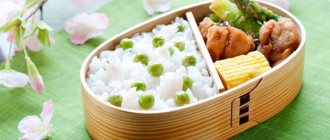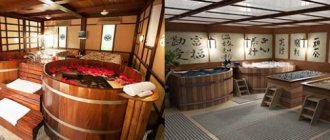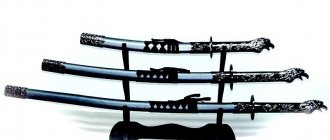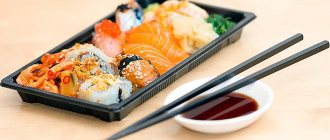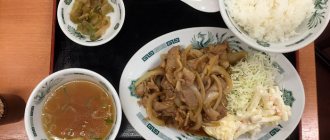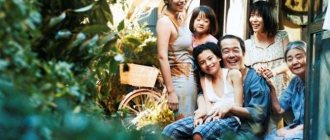Rice is the most valuable crop in Japan. This is the pride of the inhabitants of the Land of the Rising Sun, the basis of the well-being of the state. The Japanese eat it every day and prefer their own - Japanese. This cereal is the most expensive in the world. 1 kg of cheap rice costs 160 rubles, but the Japanese do not skimp on this product and prefer expensive varieties.
Rice has been grown for many thousands of years. During this time, the choice of varieties has become incredibly diverse, and each of them has unique properties. Why is Japanese rice so unique? Read on.
Chemical composition, trace elements and vitamins of Japanese rice
This product saturates the body with useful substances, is easily digestible and serves as a source of energy, which is necessary for the functioning of all organs.
It contains no fat-soluble vitamins. Among the water-soluble ones, there are B vitamins, which have a beneficial effect on the skin, hair and nails.
Content of B vitamins per 100 g of product:
- B1 - 0.1 mg;
- B2 - 0.05 mg;
- B3 (PP) - 1.6 mg;
- B5 - 1.3 mg;
- B6 - 0.1 mg;
- B9 - 9 mcg.
White grain contains phosphorus, zinc, calcium, iron, iodine, and 8 amino acids. All this is necessary for a person to create new cells. Potassium cleanses the body and is involved in joint rejuvenation.
Brown rice, thanks to its outer shell (bran), contains a large amount of fiber, vitamin E, magnesium and manganese. Therefore, in terms of usefulness it is superior to polished white.
Calorie content and BZHU
Any food serves as a source of energy. For a healthy diet, a person needs an optimal ratio of proteins, fats and carbohydrates.
The caloric content and nutritional value indicators depend on the variety, so the following figures are considered average.
For 100 g of Japanese rice there is:
- proteins - 5.50 g;
- fat - 0.63 g;
- carbohydrates - 50.5 g.
The calorie content of the cereal is 272.67 kcal.
BJU ratio: 85% carbohydrates, 11% proteins, 4% fats.
Of all cereal crops, rice contains the highest amount of protein. This is the main material for building cells, muscles, organs, and tissues. This product is useful not only for young and growing bodies, but also for adult bodies.
Attention! This cereal does not contain saturated harmful fats or trans fatty acids, which means that even with constant consumption there will be no bad cholesterol in the blood.
What do the Japanese eat for breakfast?
Modern Japanese often eat European cuisine, including for breakfast. But a traditional Japanese breakfast consists of:
- Boiled rice and natto. Natto is a type of soybean that is seasoned with sauce and placed on top of rice. Since natto is very rich in vegetable protein and satisfies hunger for a long time, this dish is popular for breakfast.
- Tamago-yaki is an omelette rolled into a roll. Tamago-yaki differs from the usual omelette in that a little soy sauce with added sugar is poured into it.
- Misoshiru is a soup made from miso bean paste. To prepare it, soy cheese tofu, wakame seaweed and other ingredients are used. The composition of the soup largely depends on the season and region of residence of the Japanese.
- Tsukemono – pickled vegetables. Each type of vegetable has its own pickling method. Since vegetables are not heat-treated, they retain all their beneficial substances. Nowadays, much less salt is added to tsukemono than before.
- Tea. Most people in Japan drink green tea. Not a single meal is complete without tea.
Despite the variety of dishes, they are served in very small quantities. It is noteworthy that the Japanese practically do not eat bread and butter, even for breakfast. Soy products are very nutritious and provide long-lasting energy.
What are the benefits of Japanese rice?
All over the world it is believed that if rice turns out fluffy after cooking, it is a product of the highest quality. And only the Japanese love sticky boiled rice. After heat treatment, it does not boil into porridge.
Japanese dishes with rice, where it is rolled into balls, cakes, rolls, look beautiful and appetizing. All grains are one to one, after cooking they do not lose their shape and stick tightly to each other.
Any variety of Japanese rice contains a balanced amount of vitamins and microelements. Residents of the Land of the Rising Sun are considered long-livers - what is the reason? Every Japanese diet includes daily consumption of this product without salt and spices. A week produces at least 2 kg. The Japanese owe their longevity to rice.
Methods of application
The Japanese not only eat rice as part of their dishes, but also come up with various products based on it:
- Sake, or rice wine, is known far beyond the borders of the land of the rising sun. This alcoholic drink is obtained through the fermentation of grain. Sake is served hot or cold. Rice dishes are not served with rice wine as an appetizer.
- Sweet rice wine, mirin , is made in the same way.
- Rice vinegar comes in light and dark colors. Light is used in canning and preparing rice for sushi. Dark is considered a health drink.
- Rice flour is milled from ground glutinous white rice. It is used to bake bread, Japanese sweets and rice crackers. Used as a thickener.
- Rice bran, or nuka, is produced when brown rice is polished. This is the hard outer shell of the grain. Bran is nutritious and is used in many Japanese recipes.
Clean Plate Society
In Japanese culture, when visiting a friend's house, it is especially important to eat all your rice at dinner. Not following this rule is considered rude because you are not only disrespecting the gods, but you will also be disrespecting the person who took the time to prepare the food for you. So, either take a small portion to begin with, or just be prepared to fill your belly.
Restaurants are a slightly different story as you don't have portion control and taking leftovers home is not common in Japan. While it is perfectly acceptable to leave food on your plate, it is still not ideal. Japan has plenty of all-you-can-eat restaurants and convenience stores that end up throwing away leftover food at the end of the day.
With chopstick rules and taboos dictating the order in which dishes should be eaten, the world of Japanese cuisine can be confusing not only for foreigners but also for locals.
Japanese rice varieties
The varieties of rice grown in Japan are called Japanese or Japonica. It is cultivated throughout the country. Each locality (prefecture) has its own varieties.
There are about 700 varieties of rice known in the world, and about 50 are grown in Japan. Let’s talk about the most common ones.
Interesting! Rice culture in Japan is more than 3 thousand years old.
Urutimai
Short grain, has a rich, slightly sweet taste. It becomes sticky during cooking. Used to make sushi.
Hakumai
Another name is white rice. The short grains are polished to remove the hard outer shell. When cooked, hakumai becomes sticky.
Mochigome
A cereal with short grains and a matte surface. The heat treatment makes it stickier than regular Japanese. It is used in making sweets and rice cakes because it contains a lot of sugar. It is preferable to steam it.
Genmai (Genmai)
Brown rice Long grains contain more vitamins and minerals on the outside because they undergo less grinding. The Japanese eat it much less often, as they consider it not as tasty as hakumai. But due to its nutritional qualities, genmai is gradually gaining popularity.
Koshihikari
Its main feature is taste. Cooked rice is shiny, highly sticky and rich in flavor. Grown only in Niigata Prefecture.
Koshiibuki
Brought out in 1993 based on the Koshihikari variety. After cooking it turns out crumbly. The sweetish taste remains even when chilled.
Eat all the rice!
In Japan, "eating all your rice" does not mean eating all the big chunks of rice and leaving behind a few grains that you can't pick up with your chopsticks. This means eating every last crumb. This is highlighted by a saying often told to children (and uninformed foreigners): “Every grain of rice has seven gods of happiness,” so you better not disrespect them by not eating them all!
Mottainai is a Japanese concept that denotes a philosophy and lifestyle that promotes respect for the environment and human creations and condemns wasteful use of resources. The Seven Gods of Fortune (七福神, Shichifuku-jin) are seven deities who bring good luck in Shintoism.
Tamago Cake Gohan. Raw egg on rice. Recipe
The saying and the concept itself include ideas of respect for the hard work of farmers who grow rice (bread in Russia), and the understanding that there are people in our world who do not have this rice. Be sure to eat those last 2-3 grains, otherwise you will be in big trouble in life!
Tatami etiquette. You cannot step on the threshold of the Japanese room.
Beneficial properties for the human body
Japanese rice is called the key to health, because it has many beneficial properties:
- the richest composition of vitamins and minerals provides the body with energy, participates in the production of new cells, and promotes bone health;
- contains fiber, which protects the digestive system from toxins;
- low in calories, which improves metabolism and promotes weight loss;
- promotes normal functioning of the cardiovascular system;
- rejuvenates the skin (rice masks treat problematic skin, antioxidants help fight wrinkles);
- strengthens the immune system.
Possible harm and contraindications
Despite all its beneficial properties, Japanese rice cannot be considered a cure for diseases. It is consumed in moderation and takes into account the characteristics of the body and concomitant diseases.
The Japanese themselves do not live a single day without rice. They prefer polished white - the most expensive, but not the most useful. The degree of polishing determines how many vitamins and microelements will remain in it.
Brown varieties are affordable. Their taste is less pleasant, but in terms of the presence of useful substances they come first.
There are no special contraindications to eating Japanese rice. Doctors advise type 2 diabetics to eat it with caution, due to its high carbohydrate content. In this case, it is important to take into account the variety and not overuse those that contain a lot of sugar.
Three points
Since most Japanese people eat onigiri without any regard for etiquette, these three points immediately caused controversy on the Internet.
1. So now that we have learned about the history of onigiri and the importance of rice in everyday life, what is the proper way to eat a rice ball? Well, according to Honda, the first thing to watch out for is showing off the bitten part of the onigiri . Honda says that the bitten part is unsightly to others, so after being bitten, you should either hold the onigiri horizontally to your mouth , or split it into two parts before biting, as this will make it easier to eat.
How to eat onigiri
2. The second point to remember is to not let rice grains stick to your hands in public . If this happens, do not lick the rice grains off your fingers. This may seem like the easiest option, but it doesn't make a good impression, even if you tilt your head to try to hide what you're doing. Use a hand towel or napkins to remove the rice.
3. The last thing to remember is that if onigiri rice balls are included in bento boxes, they should be eaten with chopsticks and not with your hands.
This rejection of onigiri etiquette has much to do with the casual nature of the rice balls, which are typically eaten in a relaxed, relaxed atmosphere. However, as an etiquette coach, Honda is always thinking of ways to add elegance and sophistication to even the most ordinary situations.
Views: 670
Share link:
- Tweet
- Share posts on Tumblr
- Telegram
- More
- by email
- Seal
Liked this:
Like
